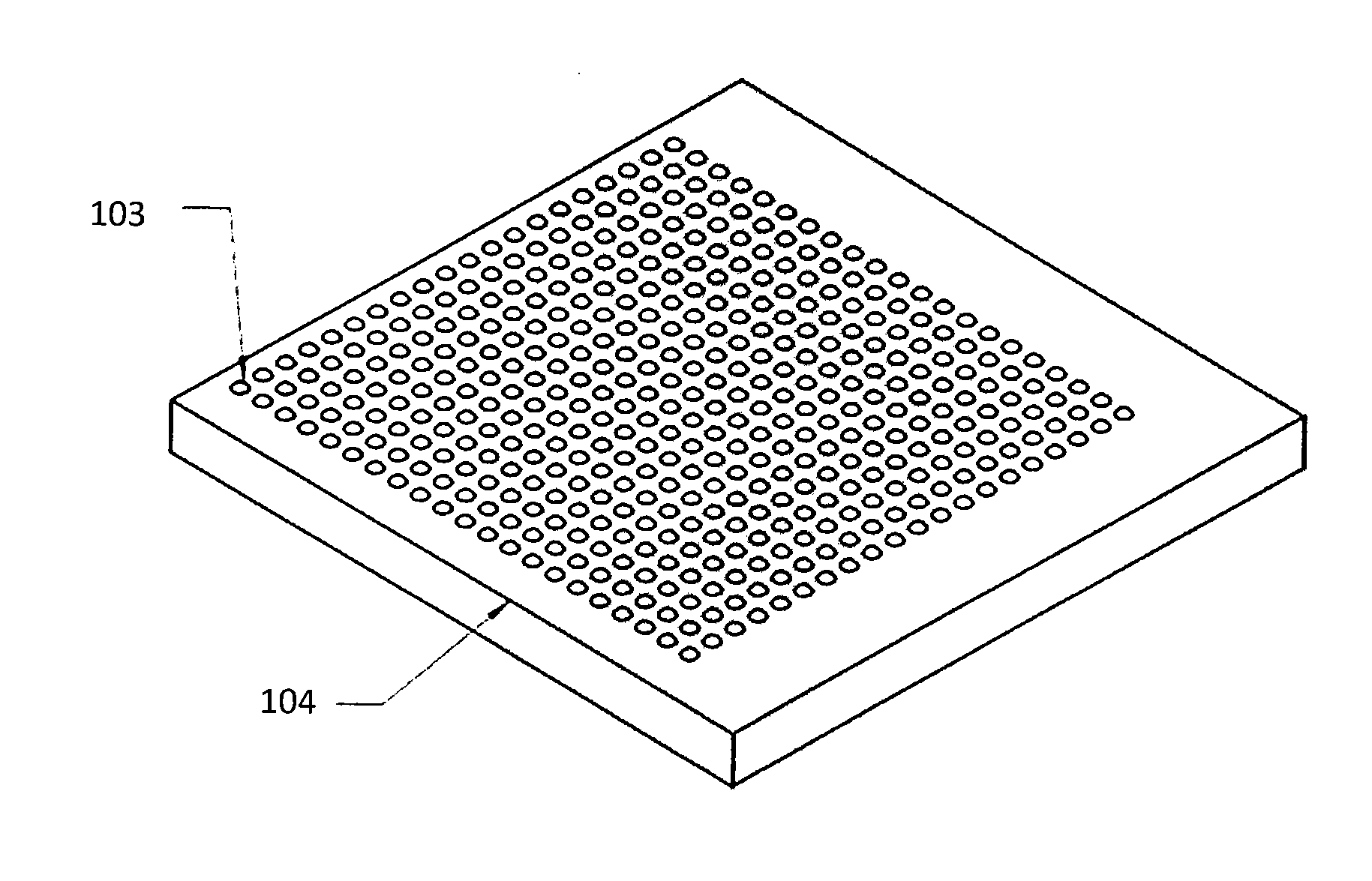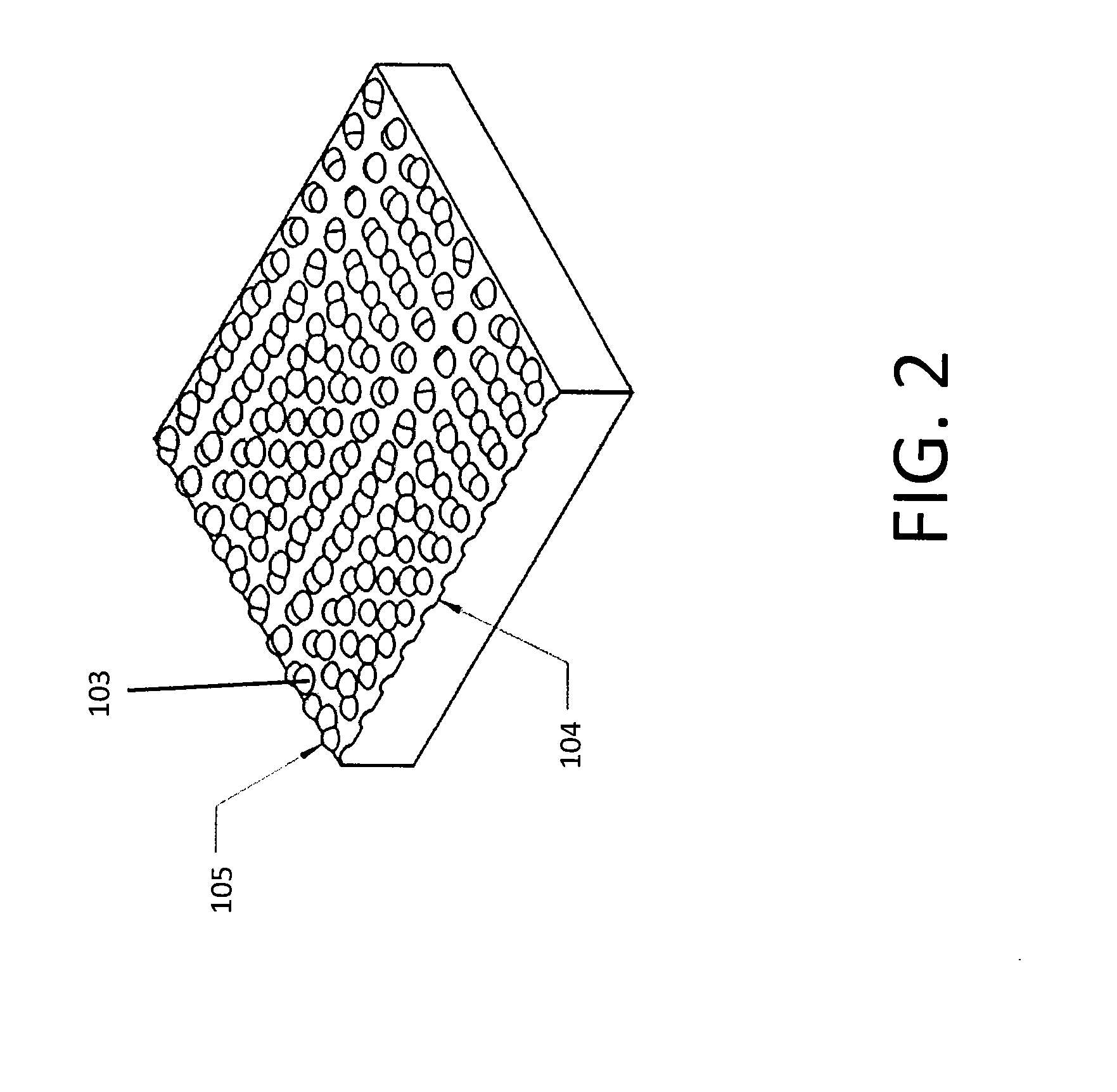Processes for producing regular repeating patterns on surfaces of interbody devices
a technology of interbody devices and repeating patterns, which is applied in the direction of prosthesis, pharmaceutical packaging, packaging, etc., can solve the problems of impaired discs, affecting the anatomical functions of vertebrae, and discs may become diseased or infected, and achieve the effect of sufficient bioactivity
- Summary
- Abstract
- Description
- Claims
- Application Information
AI Technical Summary
Benefits of technology
Problems solved by technology
Method used
Image
Examples
Embodiment Construction
[0042]The present invention provides for interbody spinal implants, including solid-body implants and composite implants, having surfaces with a specific pattern designed to influence, for example, healing and fusion responses and provide a balanced friction inducing load dispersing surface.
[0043]Accordingly, in one embodiment of the present invention, a process of producing an interbody spinal implant includes applying at least one additive process or subtractive process to at least one base surface of an interbody spinal implant to form a regular repeating pattern (e.g., a roughened surface topography).
[0044]The implant may be obtained or produced, for example, by machining the implant from a raw material, and once the implant is produced, then applying surface processing to the surfaces requiring such treatment. For example, the raw material may be obtained from a supplier, and machined (e.g., milled or turned) into the basic implant shape and having certain features (e.g., apert...
PUM
| Property | Measurement | Unit |
|---|---|---|
| angles | aaaaa | aaaaa |
| angles | aaaaa | aaaaa |
| etch depth | aaaaa | aaaaa |
Abstract
Description
Claims
Application Information
 Login to View More
Login to View More - R&D
- Intellectual Property
- Life Sciences
- Materials
- Tech Scout
- Unparalleled Data Quality
- Higher Quality Content
- 60% Fewer Hallucinations
Browse by: Latest US Patents, China's latest patents, Technical Efficacy Thesaurus, Application Domain, Technology Topic, Popular Technical Reports.
© 2025 PatSnap. All rights reserved.Legal|Privacy policy|Modern Slavery Act Transparency Statement|Sitemap|About US| Contact US: help@patsnap.com



